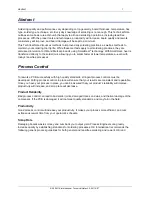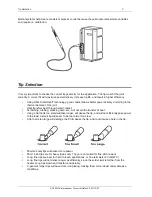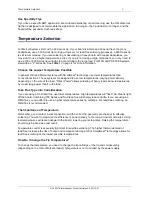
Flux Selection
4
© 2006 OK International. Technical Note v2.2; 05/14/07
Temperature is constant, while power is variable. For information on available tip cartridges, refer to
both OKi and Metcal Tip Guides.
How Do I Calibrate Tip Temperature?
Calibration is extremely important to maintaining good process control. Because OKi and Metcal
soldering systems use a "Curie point" heating technology that cannot significantly vary tip temperature,
they do not have to be calibrated. Idle temperature cannot vary +/-1C. OK International provides a “No
Calibration Required” certification, making it easy for OKi and Metcal users to meet ISO9000
requirements.
Below,
Table 1
shows some basic relationships between tip series, board type, board types when using
lead-free solder, and flux type. Actual results will depend on many factors in the operational
environment.
Flux Selection
In the soldering process, flux is often the only variable that CANNOT be changed. Customers often
specify a particular flux that must be made part of the rework process. Flux can be found in solder core
wire, or added to the solder joint in liquid or paste form.
Flux is very important to the process control. The Process Engineer must understand the function of flux,
how fluxes differ and perform, how flux affects your PCB quality, how flux affects solder tip life, and
ultimately how flux will affect your solder joint quality. Flux is an acidic material that is designed to clean
oxides from the solder joint, and help transfer heat to the solder joint.
There are many types of flux. In general, there are three categories of flux:
•
Clean (RMA) – A more traditional type of flux, RMA has more acidic content.
•
No-Clean – By far the most common in today’s marketplace. There is less flux per volume in
wire core solder. No-Clean flux has weaker acid than RMA.
Table 1:
Tip Series
PCB Type
Lead-free
Flux Type
Metcal 500
Light, Chip Cap
Not recommended
Aqueous (OS)
Metcal 600
Standard
Light, Chip Cap PCB
No-Clean
Metcal 700
Large, Multi-layered
Standard PCB
RMA (Clean)
Metcal 800
Not recommended
Large, Multi-layered PCB
RMA (Clean)









